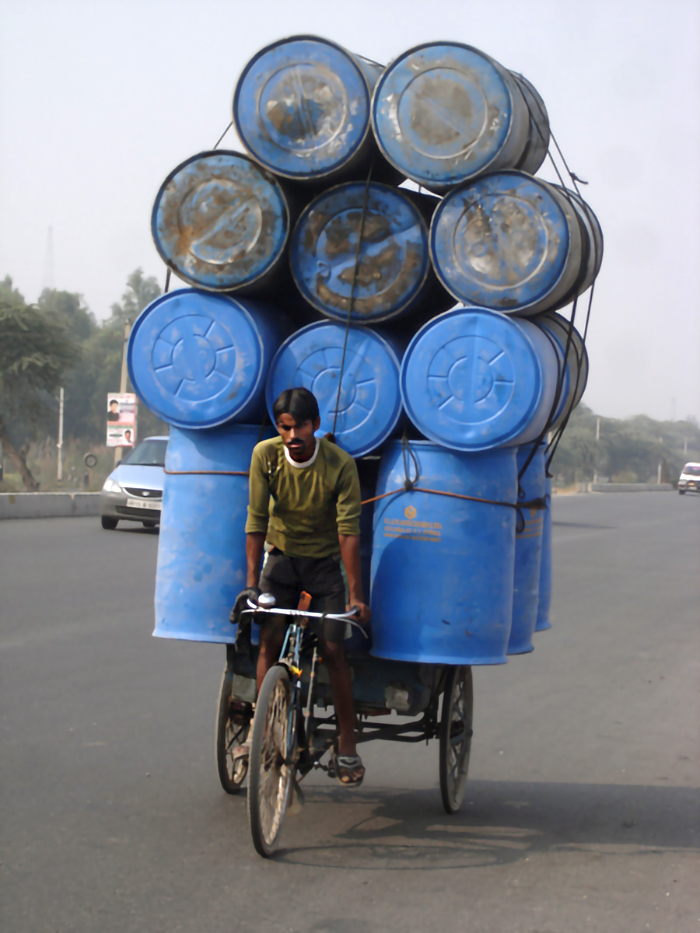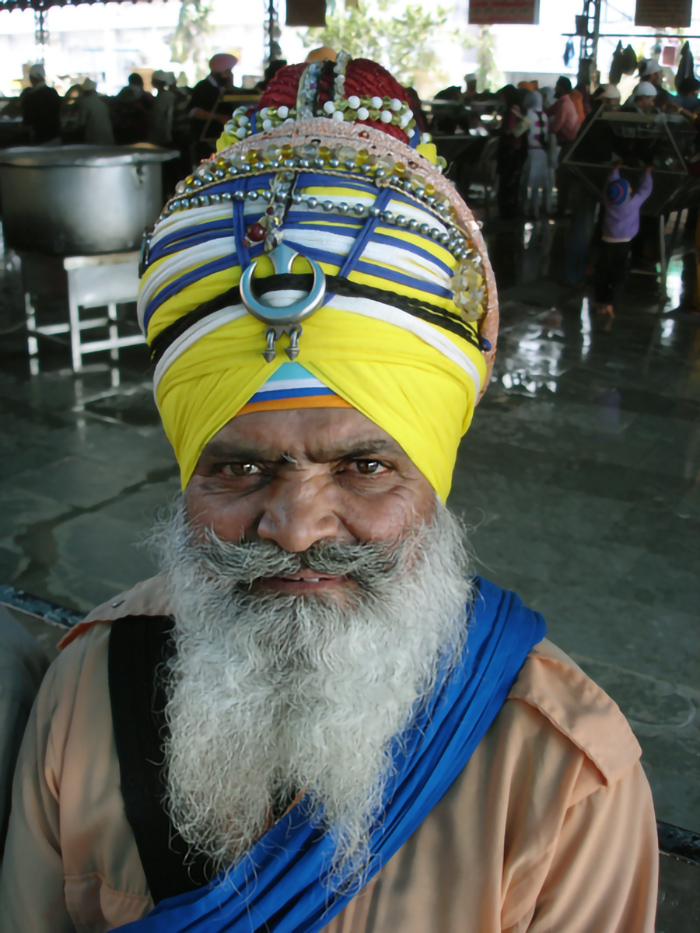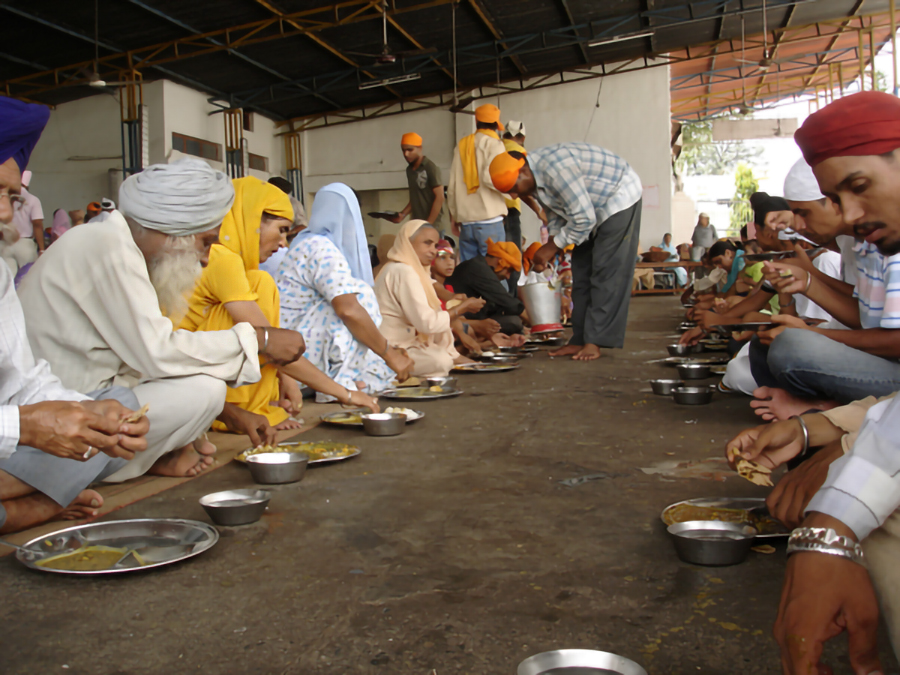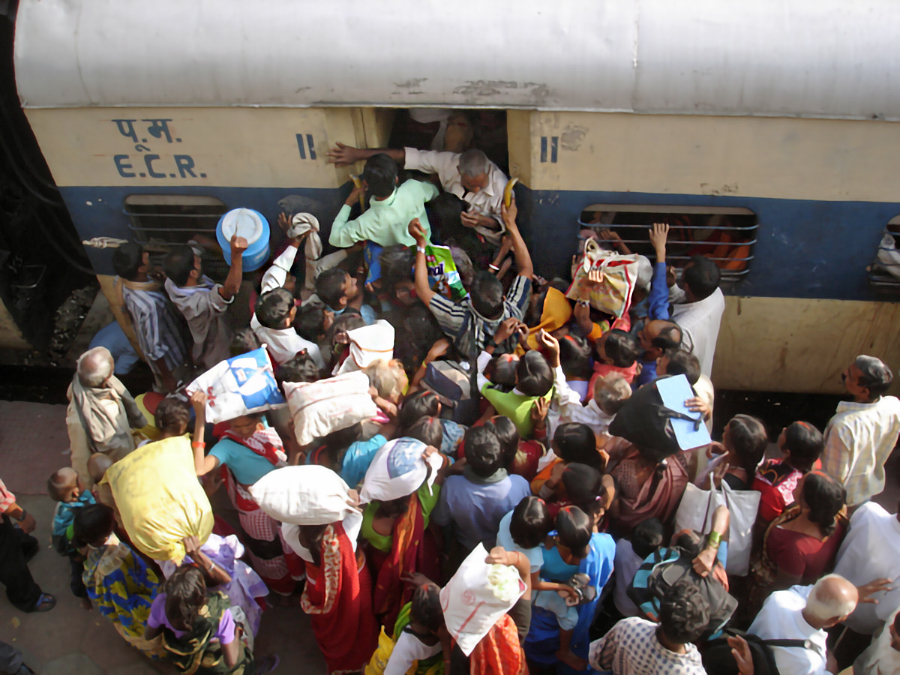How I Survived India on a Bike
My companion, Hans, pulled up to the drinks cart, stood tall over his top tube and, with a beaming grin, exclaimed: “Not bad this India, is it?”
“Not bad at all,” I replied.
Incredible India is like no other country on earth. A subcontinent unto itself, it offers an amazing variety of landscapes and cultures. From some of the most overcrowded cities in the world to peaceful, remote villages. From vast, flat plains to some of the highest peaks of the Himalayas. From dry, dusty deserts to tropical, blue-water beaches. From imported European cars and veritable palaces to slum homes built from pieces of scrap wood and cardboard.
For all its beauty and diversity, however, India is notoriously difficult to tour by bicycle. The combination of language barriers, cultural differences, health risks, climatic extremes, insane traffic, and the sheer number of people has brought many bicycle tourists to the end of their tether. This is how I survived my six months there:
The ‘People Factor’
Hans and I had crossed the border from Nepal and entered Himachal Pradesh in India’s north one morning. We were finding Indian roads to be not at all like the terror highways described to us by other bicycle tourists. Smooth and peaceful stretches in the rural areas were interspersed with chunky surfaces and general chaos in the townships. We finished the day in good spirits, relieved that our fears had been allayed.
It was only upon emerging from our hotel room that night that we came face to face with the single element most responsible for making India one of the toughest nations in the world to tour: the “people factor.”
For over 12 months in Southeast Asia, I had been cycling through areas where even though a woman old enough to be my grandma had just walked past with what appeared to be a week’s worth of firewood balanced on her head, people still looked at me as though I was the weirdest thing they had ever seen. So I was used to being stared at. But the Indians take it to another level, and they do so using the power of numbers.

As Hans and I strolled the dirty, noisy, overcrowded main street of the town we had decided to spend the night in, we were followed by a sea of eyes. The people behind them were just waiting to pounce and do that which Indians do best: form a crowd. If we were to stop for just a moment at a fruit stall an instant crowd would gather. Upon turning around, we would be surprised at how popular this fruit-wallah had just become and would have to battle our way through the crowd to open space.
As we sat for dinner in a timber shed eating chapatti and dal, we felt like tenants in a human zoo. Curious eyes filled the street outside, peering in at the strange creatures from a far away land. Never wavering, they followed every rip and dip of the soft, warm bread. The dhaba-wallah (restaurant owner) had to keep pushing people out the door as they crept closer and closer.
Any tourist to India experiences the “people factor,” but it is bicycle tourists who bear the full brunt. Cycling through remote, less traveled, mono-cultural areas make the cyclists a lone exotic species in a sea of sardines. Without other clown fish to absorb some of the attention, it becomes concentrated.
The uninhibited inquisitiveness shown by the locals is generally innocent, often endearing, and not at all surprising considering the cyclist may well be literally the only westerner the locals have ever seen outside a TV screen. Regardless, for those whose personal space extends beyond the width of their own shoulders, knowing how to deal with it can be very difficult.
My initial reaction was to clam up, zone out, and enter Tour de France mode. Cycling with my head down, hands on my horns, legs turning over at a high cadence and beats pounding my eardrums, I was able to enter a state of consciousness whereby all that existed was me, the King Brown (my loyal steed: a 2006 Fuji Touring bike) and the road. All else — people, animals, vehicles — were of no significance, merely obstacles to be avoided.
While a surreal way to ride, I soon realized that such a state of mind was not conducive to a satisfying travel experience and that before I knew it, my time in this amazing nation would be over and I would have spent it looking at my front tire. So I opened up, greeted the locals and with as much enthusiasm as I could muster, answered all of the usual, broken-English, interrogation questions:
“From which country?”
“Your name?”
“Where do you go?”
“First time in India?”
Through such interactions my travels instantly became a far more rewarding and fulfilling experience. What’s more, I became familiar with and adopted the famous Indian “head wobble,” which was reward enough in itself. This slight cock of the head to one side can mean “yes” or “no,” “hello” or “goodbye,” “more please” or “that’s enough, thank you.” Needless to say, it takes a while to decipher the gesture correctly. But once I mastered it, I not only eliminated half of the language barrier, I was able to embrace, rather than reject, the “people factor” that makes India the special place that it is.
Staying Healthy
Anyone who has traveled through India — particularly those on a budget in non-tourist areas — know how difficult it is to stay healthy. The threat of illness looms over one’s shoulder and makes itself known with every twist, turn, and rumble of the stomach. And once invaded by a bug, it is incredibly difficult to repel the occupying force and prevent further invasions.
As a bicycle tourist, it’s not only the risk of food poisoning that is increased; it’s also the effect it has. Our mode of transport relies on maintaining a healthy body and a reasonably clear mind. Without those, we can find ourselves stranded.
It was in the mountainous northern backpacker town of Kasol that I became stranded when a four-week battle between my immune system and an invading stomach bug finally came to a head. At the height of what felt like the Tet Offensive on my insides, I was at a loss as to what action to take. I eventually decided that it would be Kasol’s good food — thanks to an abundance of tourist dollars and western appetites — that was to form the basis for my efforts to counterattack and put a decisive end to this deeply unpleasant war.
Having not eaten meat for two months due to cost, as well as a lack of availability and quality, I splurged on substantial meat infusions three nights in a row. There were not too many sheep grazing in those parts and beef was obviously strictly off limits, so I was restricted to chicken pasta, a chicken burger, and chicken pizza.
Some might say that eating meat to fight stomach bugs in India is somewhat of a paradox, but my army had been decimated. Some of my best soldiers had been violently expelled from my body and I needed reinforcements. I needed to gamble on mercenaries who I knew could turn against me, but if they remained loyal might just be the key to victory.
The war raged on, but in the end the Poultry Platoon served me well and we emerged victorious. It had been a costly battle that left me feeling weak and listless. My spirit was hanging by a thread, but intact. With the bug decimated I was ready to rebuild.
Seeking out the Sikhs
The Sikhs, numbering over 22 million in India, are easily recognized by their long and carefully groomed beards, as well as the large turbans that conceal their wild, uncut hair. Most dominant in the Punjab, I had encountered them in most towns I passed through and found them to be generally more likely to speak at least a little English and are therefore good sources of directions and other useful information.

The primary reason to seek out the Sikhs however, is their unrivaled hospitality. I experienced it for the first time when I visited a Sikh gurdwara in an town that clearly did not see many tourists, let alone those traveling by bicycle. I cautiously approached the temple unsure of the attitude Sikhs have toward outsiders in their places of worship.
When faced with such uncertain situations, and now traveling on my own, my default plan of action was to blindly follow the crowd until I was told that I should not be here, should not be doing this, or am not allowed to photograph that.
I followed worshippers to the shoe check counter, I followed them to the foot-wash pond and I followed a kind man’s advice to cover my head. I followed them through the beautifully decorated main hall where a small man sat cross-legged reading from a huge book beneath a carved marble gazebo. And finally, I followed them to the rear courtyard where many devotees were enjoying the gurdwara’s guru ka langar (communal kitchen).
Once again, I approached tentatively, but soon had a stainless steel thali thrust into my hands by a woman who grabbed it from a stack of hundreds. I sat on the ground in one of the long rows of diners, facing those in the row opposite me. One by one, the rice man, the dal man, and the pickle man visited me. They walked the rows filling whichever section of my partitioned plate was bare. The water man slopped the contents of his bucket into my drinking bowl and to the chapatti man, I raised both hands, holding my palms upwards into which he flopped the warm, round bread.
That was the first of my experiences with Sikh hospitality and I made sure it wasn’t the last. As I cycled through the Sikh-heavy deserts of northern Rajasthan and the Punjab, I would look for a place to rest my head at the end of each day. However, rather than stray from fruit-wallah to paan-wallah to rickshaw-wallah asking for hotel sasta-wallah as I would in other parts of India, I made a beeline for the sparkling white dome of the local gurdwara, the golden spire of which always stood high above the buildings that it surrounded.
Not once were my requests for a bed met with even an inkling of hesitation; only goodwill, warmth, and, of course, chai.
I ate my meals in the various guru ka langars where people of all religion, races, castes, and genders are welcome to receive as much food as they desire, free of charge. The rows in which diners sit side by side, cross-legged on the ground, symbolize that no person is above any other — we are all brothers and sisters and we shall eat and live as such.

Approaching temples for hospitality initially began with a financially based motive — they were free. However I soon discovered a reason far more valuable than saving rupees. At temples I was a guest rather than a client. The more I lived off the charity of others, the easier it became to remove the guilt associated with accepting charity. I made the heartwarming realization that such guilt was completely unwarranted because the charity was never given with the purpose of receiving anything in return.
This was the spiritual India that I had heard so much about. The India that enters one’s soul, nestles within and makes a permanent home there. This was the India that changes people.
Letting Go
There are a few philosophies that I lived by to assist me in my time as a bicycle nomad. One involved seeing life as a series of temporary states: I may be stuck cycling in the cold, rainy, wind-blown mountains of remote northern India, but it’s okay; eventually I will be dry and warm again. If not tonight, probably tomorrow. Eventually.
Another philosophy could be summarized as taking it on board: there are ants crawling in my rice. There are ants in everyone’s rice. What else are you going to eat halfway down the Ganges?
And a third, which encompasses all others, was that of letting go.
Letting go is about unburdening oneself of control, dependence, and expectation. I found it to be essential in not only enabling me to see the beauty of India, but in helping me deal with its ugliness.
This ugliness was most vividly exposed to me while catching a train from one impoverished state to another. The carriage I was traveling in was packed full of tired-looking men and women sitting cross-legged on the hard metal floor. At one station, a very ill-looking, bloated girl wrapped in a thin blanket was nursed onto the carriage by her mother and older brother. A space was cleared for her on the floor near my feet and she curled her fragile body into a ball. She glanced up at me with her sad, sick eyes and then closed them in a manner that suggested that she was resigned to the possibility that they may never open again. I felt a familiar knot of helpless sympathy form in my stomach and two familiar words formed in my mind: “Damn it.”

I am not sure why it is these words that naturally arose when I was faced with India’s ugliness. Perhaps I was damning a world where a severely ill child, who clearly needs medical attention, is forced to travel on the metal floor of an overcrowded train. Maybe I was damning a world where a double amputee pushes himself through the dirt on a cart with only slightly rounded, wooden wheels. A world where a filthy, disease-riddled little girl is raised in a slum home constructed of other people’s garbage, with little hope of ever escaping.
Perhaps I was damning the fact that despite my good bill of health and relative wealth, I still felt so utterly helpless.
Many have asked me if India is worth visiting. To them I reply with an emphatic yes. But India is a land of extremes and an assault on the senses. It must be swallowed whole. Wince at the bitter, suckle on the sweet. Endure the pain, embrace the pleasure.
Do not shy away from the ugliness and the beautiful will reveal itself.
Let go. India will be; be with it.

